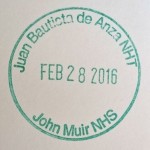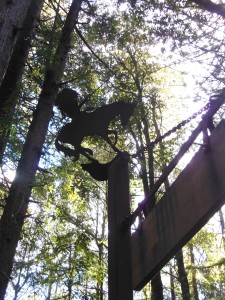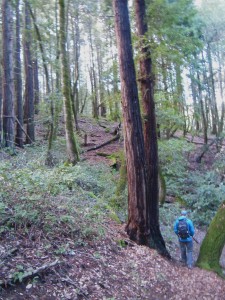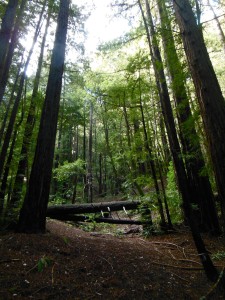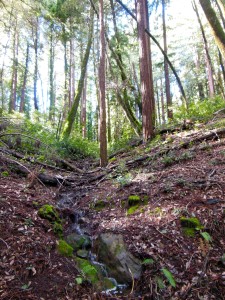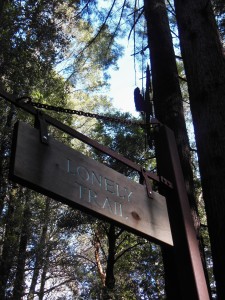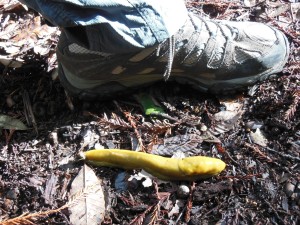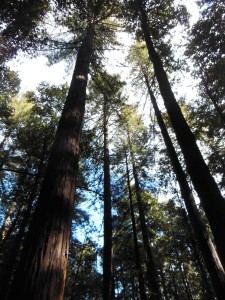In September, we took a vacation up to the Seattle area and, of course, hit up some of the area’s National Parks. Glacier-covered Mount Rainier is the highest mountain in Washington (and an active volcano!). Even though we were there over Labor Day weekend, we still managed to get a room in the park for Sunday night, so off we went!
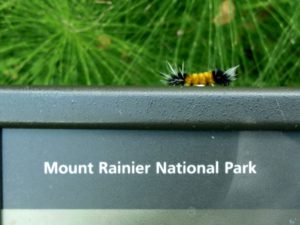 On Saturday, we drove down to Mt. St. Helens National Monument (managed by the U.S. Forest Service) and started our volcano viewing. Although Mt. St. Helens and Mt. Rainier don’t look too far on the map (and both are ~2-3 hours from Seattle), it takes some time to get between them as each mountain is quite a ways off I-5 and there’s no direct connector. However, it gave us a good opportunity to approach via the southern Stevens Canyon entrance station. The plan was to get a passport cancellation at the Ohanapecosh Visitor’s Center, but I didn’t realize that it was in the campground before the entrance station. By the time I realized my mistake, we didn’t feel like driving back out of the park – oh well. We did stop just inside the entrance to hike down to Silver Falls. This was a lovely little hike to a waterfall that even in September was still going pretty strong. We took the intermediate approach from the Grove of the Patriarchs trailhead (0.5-0.6 mi), but the falls can also be accessed via shorter or longer hike from Rte 123 or the campground.
On Saturday, we drove down to Mt. St. Helens National Monument (managed by the U.S. Forest Service) and started our volcano viewing. Although Mt. St. Helens and Mt. Rainier don’t look too far on the map (and both are ~2-3 hours from Seattle), it takes some time to get between them as each mountain is quite a ways off I-5 and there’s no direct connector. However, it gave us a good opportunity to approach via the southern Stevens Canyon entrance station. The plan was to get a passport cancellation at the Ohanapecosh Visitor’s Center, but I didn’t realize that it was in the campground before the entrance station. By the time I realized my mistake, we didn’t feel like driving back out of the park – oh well. We did stop just inside the entrance to hike down to Silver Falls. This was a lovely little hike to a waterfall that even in September was still going pretty strong. We took the intermediate approach from the Grove of the Patriarchs trailhead (0.5-0.6 mi), but the falls can also be accessed via shorter or longer hike from Rte 123 or the campground.
After hiking down to the falls and back, we continued on to Paradise. We managed to get a few glimpses of the mountain on the road, but by the time we reached Reflection Lake for a photo op, the clouds had moved in. Once at Paradise, we had to take one big loop before finding parking (but don’t worry, the NPS is currently paving Paradise to put up a parking lot – or at least improve one), and more and more fog had moved in in the meantime. We had the dilemma of whether to hike to Myrtle Falls or take the Nisqually Vista Trail in spite of the clouds and fog. We decided to take our chances with the vista, thinking the clouds might clear, and if not, we still would get a nice walk. Well, it turned out to be the latter, but we still had an enjoyable walk through the subalpine trees and meadows, where we even were treated to some straggler spring/summer blooms and saw a pond full of tadpoles!
That night, we stayed in the National Park Inn in the Longmire Historic District. The cozy inn was your typical national park lodge, with a mix of rooms with and without bathrooms (ours ended up being shower only, so we still had to use the guest bath for the baby). Reading over the guest info, I learned what to do in case of lahar (volcanic mudslide). I somewhat doubted my ability to climb the 1000+ ft elevation trail across from the inn in the middle of the night to get to high ground in time, but luckily we didn’t have to test that hypothesis. In the morning, we collected my passport cancellation at the Longmire Museum and walked the short “Trail of the Shadows” interpretive loop around the meadow. The loop brings you past beaver dams and the original spring that spurred the settlement.
I believe there was another passport cancellation at the Nisqually entrance station, but the line of cars trying to get in discouraged us from looping back around on our way out – that’s two missed cancellations for this park!
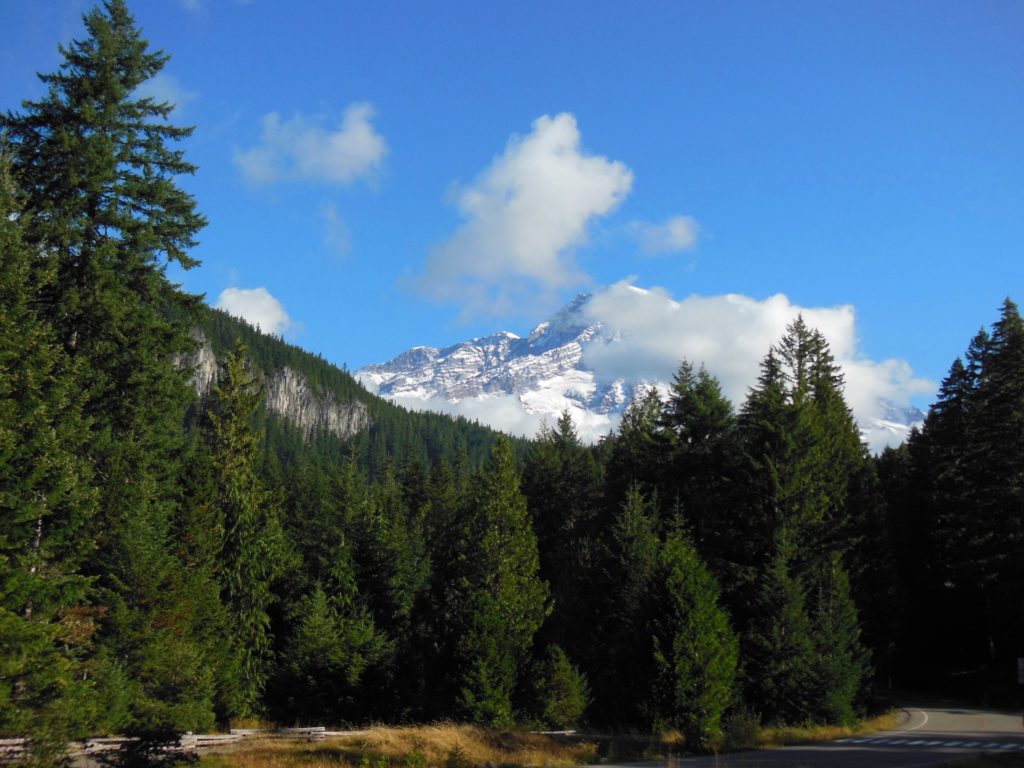
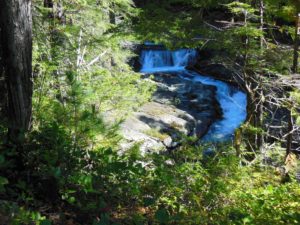
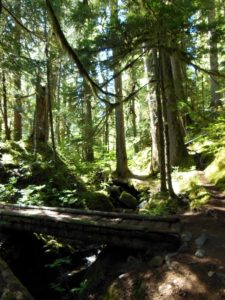
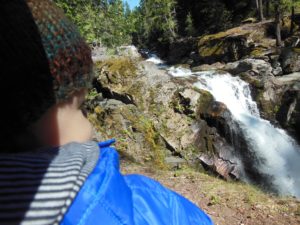
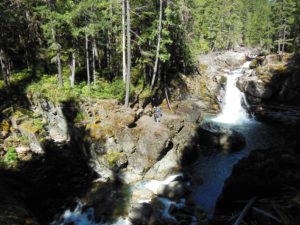
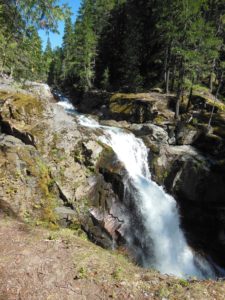
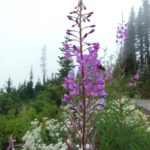
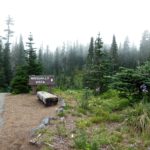
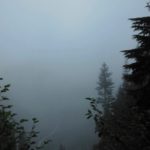
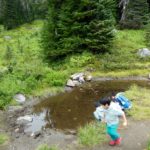
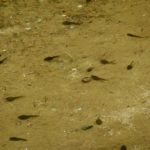
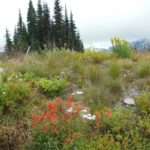
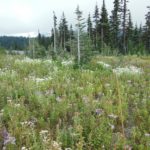
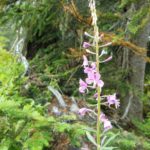
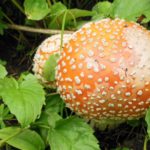
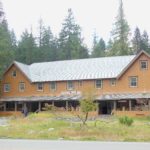
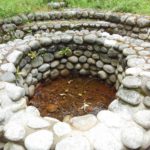
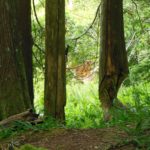
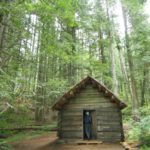
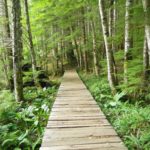
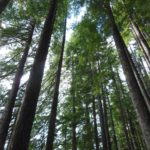
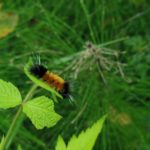
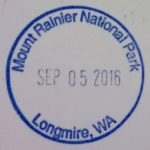
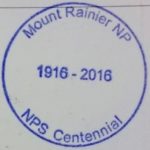
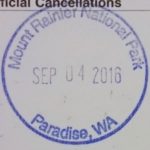
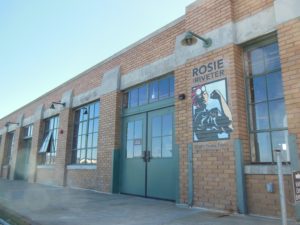
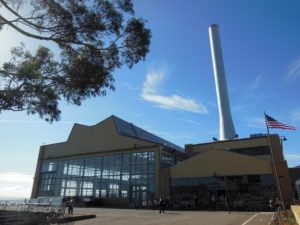
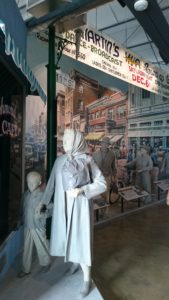
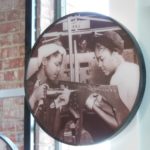
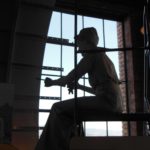
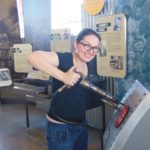
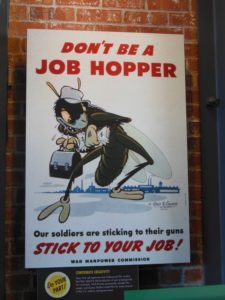
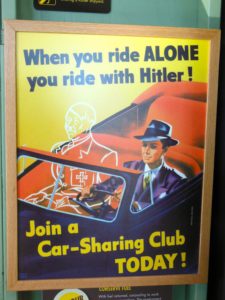
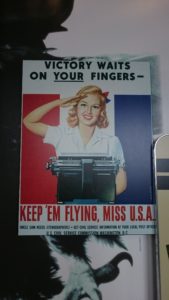
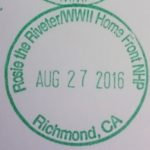
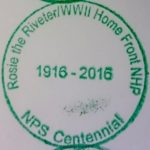
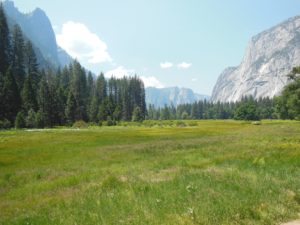
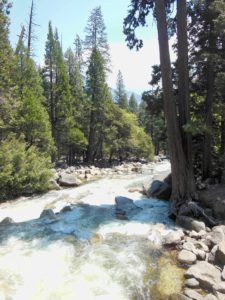
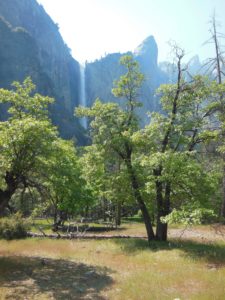

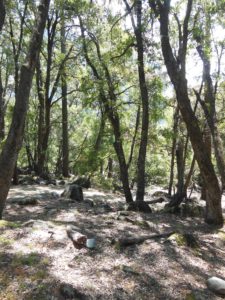
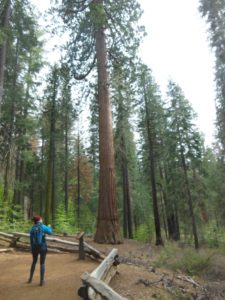
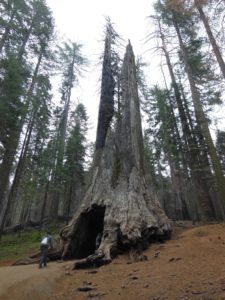
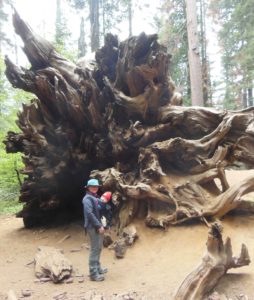
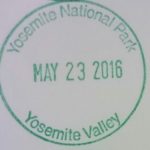
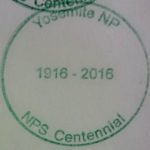
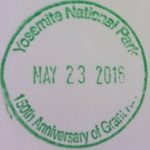
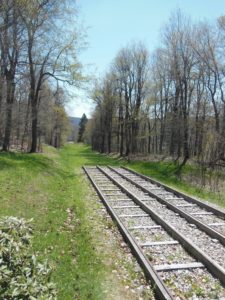
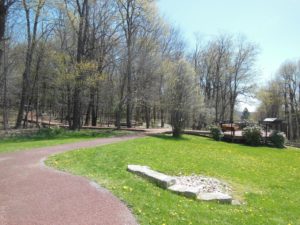
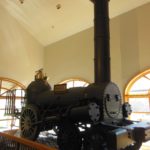
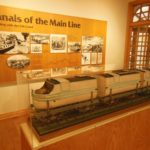
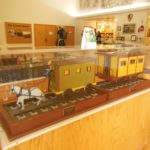
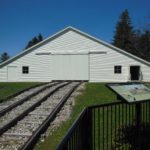
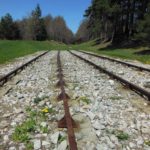
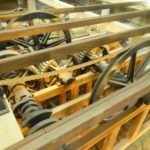
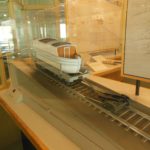
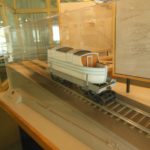
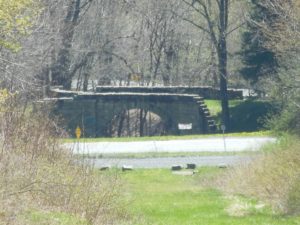
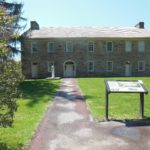
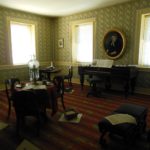
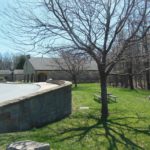
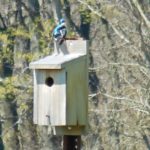
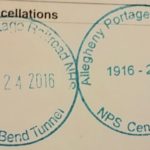
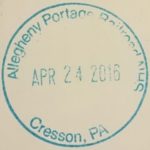
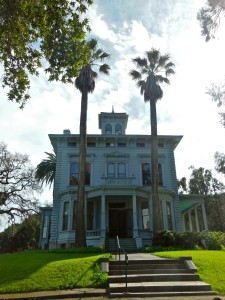
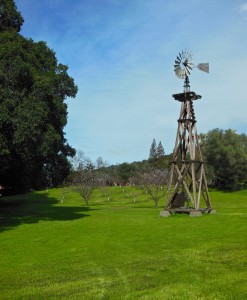
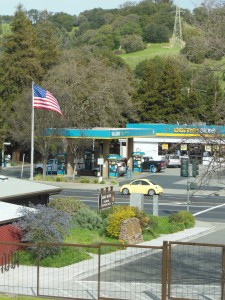
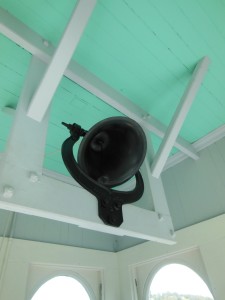
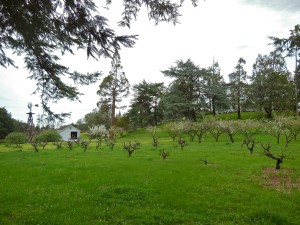
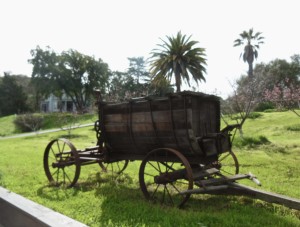
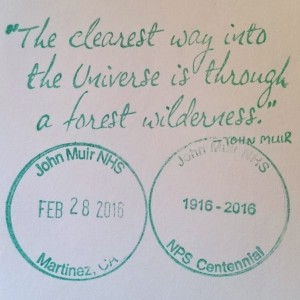
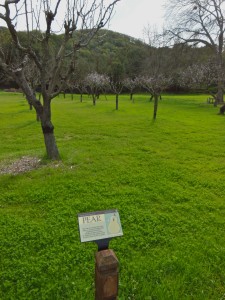
 The grounds are well-kept and include not only the fruit trees, but a little patch of redwoods and a giant sequoia planted by Muir himself. It is not quite as giant as the ones in their prime climate (or perhaps because it’s only ~100 years old?), but that didn’t stop one other visitor we saw hugging it 🙂 Many of the trees were blossoming on the day we visited, and according to the website, you’re free to pick a piece of fruit or two other times of the year. We packed a picnic and had a lovely lunch under the redwoods.
The grounds are well-kept and include not only the fruit trees, but a little patch of redwoods and a giant sequoia planted by Muir himself. It is not quite as giant as the ones in their prime climate (or perhaps because it’s only ~100 years old?), but that didn’t stop one other visitor we saw hugging it 🙂 Many of the trees were blossoming on the day we visited, and according to the website, you’re free to pick a piece of fruit or two other times of the year. We packed a picnic and had a lovely lunch under the redwoods.
